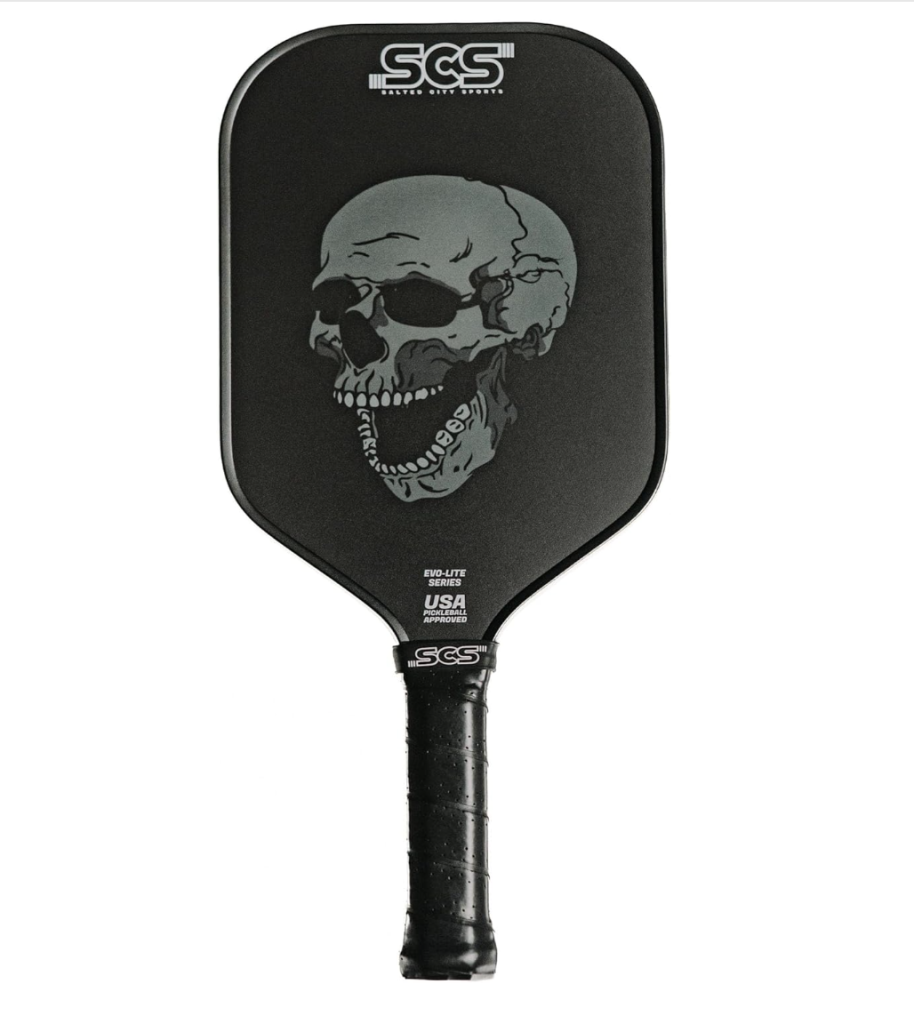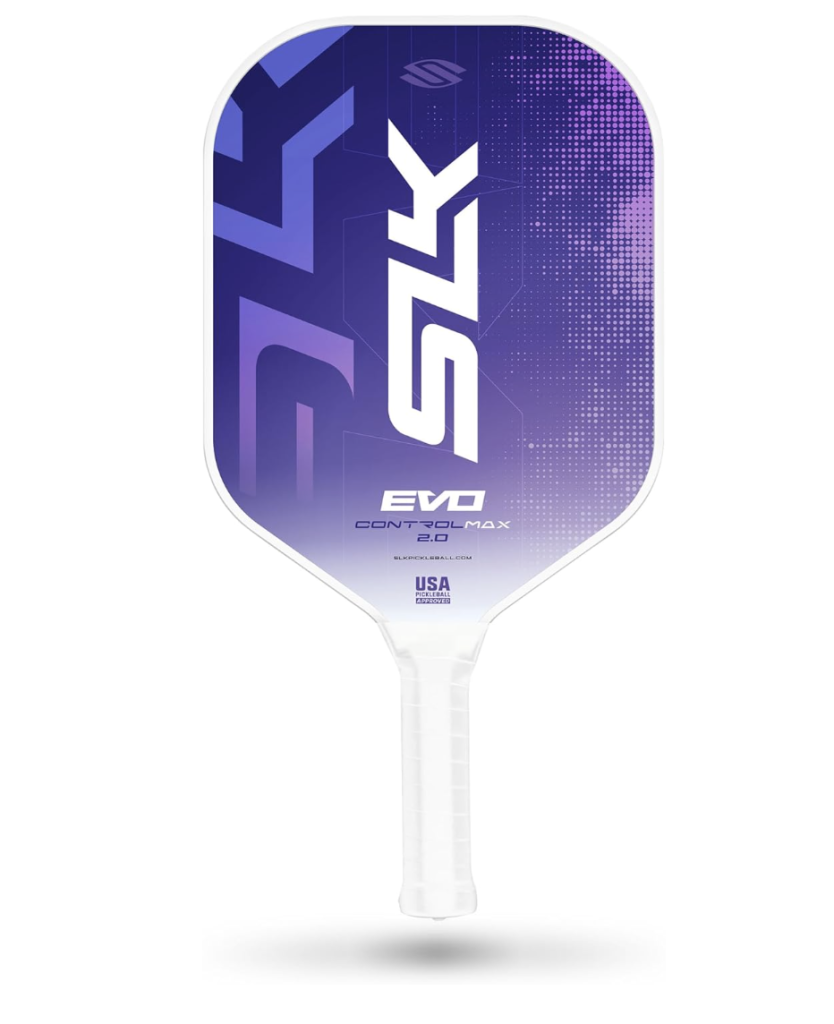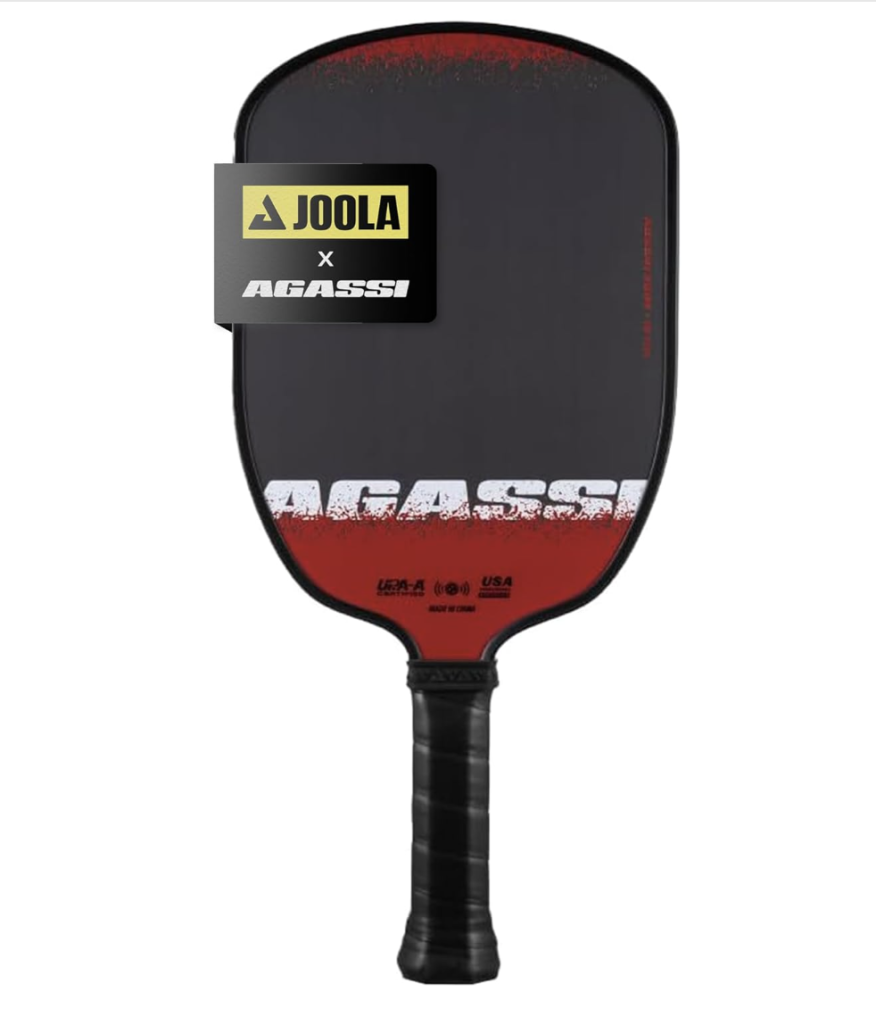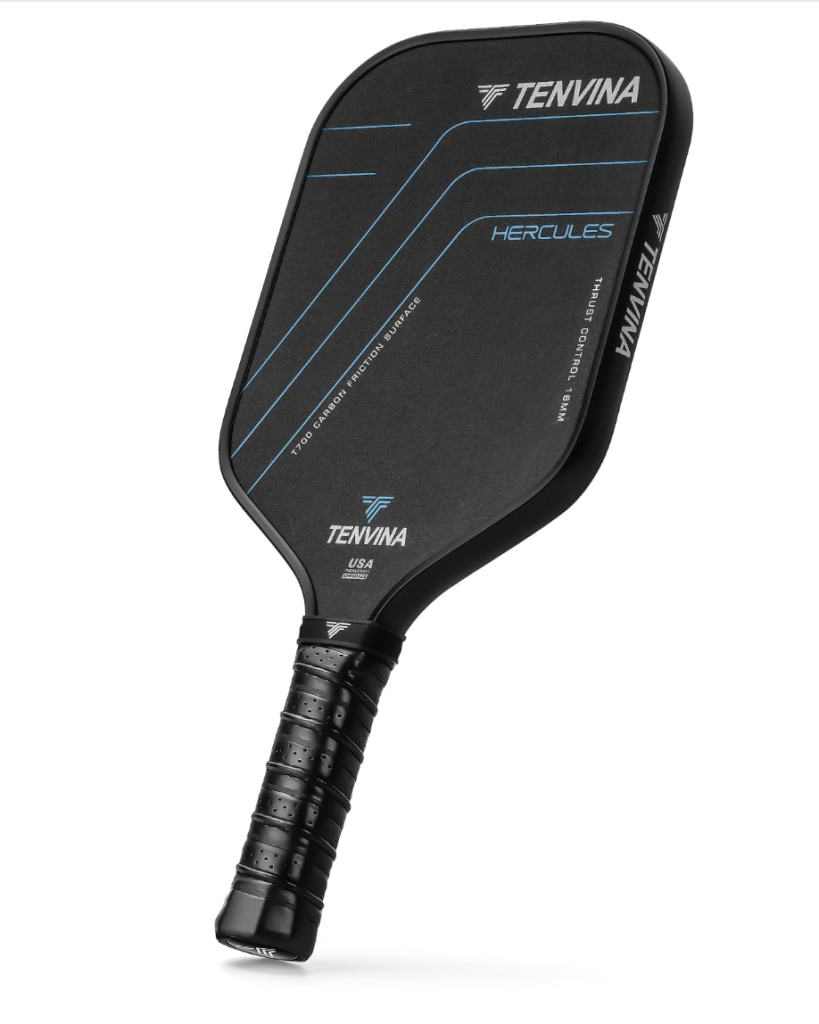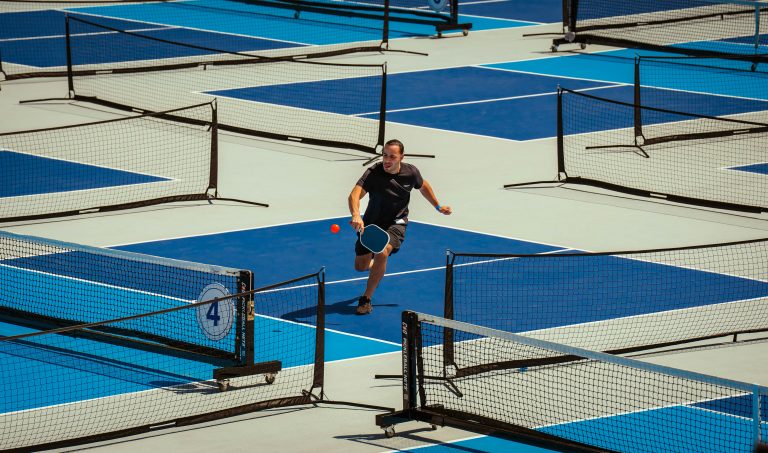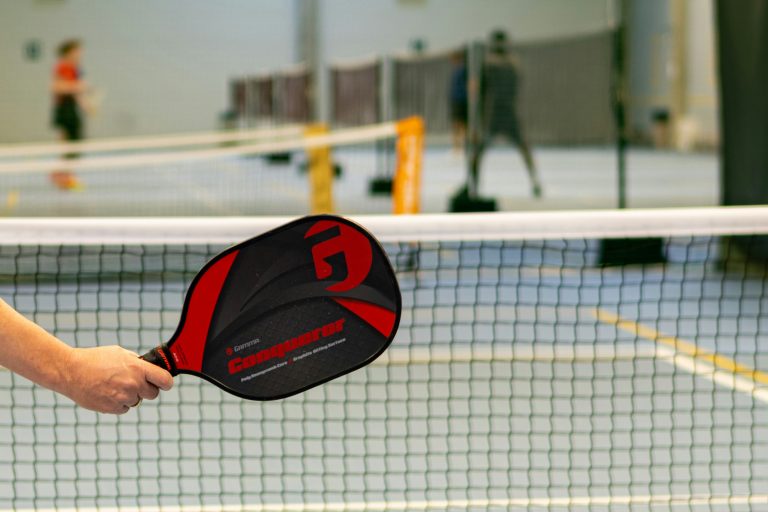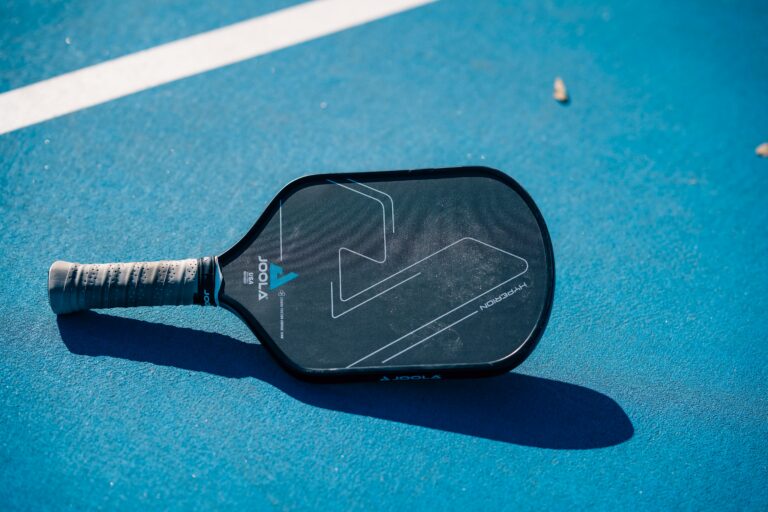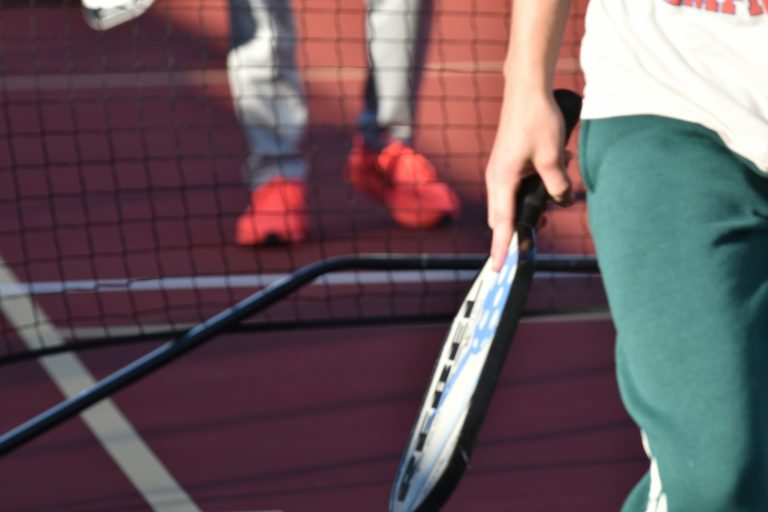Best Pickleball Paddles for Wheelchair Players (2025) | Lightweight, Spin & Comfort Picks
Updated October 2025
If you’re a wheelchair player looking to up your pickleball game, you’ve come to the right place. Finding the right paddle can make all the difference in your performance and enjoyment. Whether you need lightweight options for quick movements or paddles that enhance spin and power, there’s something out there for everyone.
Curious about which paddles stand out the most? Let’s explore the top picks that can elevate your game!
SCS Carbon Fiber Pickleball Paddle
If you’re an intermediate player looking to up your pickleball game, the SCS Carbon Fiber Pickleball Paddle from the Evo-Lite Series could be just what you need. This paddle balances power and control, making it perfect for your next match. Its lightweight design guarantees you won’t feel weighed down while playing. Plus, the textured carbon surface gives you enhanced spin control for that perfect topspin or slice. With a sure grip handle, it feels comfortable in your hands, letting you focus on your game. With rave reviews and a large sweet spot, you’d be making a smart choice with this paddle!
Best For: Intermediate players looking to enhance their pickleball skills with a balance of power and control.
Pros:
- Lightweight design for easy maneuverability during play.
- Enhanced spin control thanks to the textured carbon surface.
- Large sweet spot for improved accuracy and targeting.
Cons:
- No carry bag included with purchase.
- May not suit beginners who are just starting out in pickleball.
- Limited to unisex-adult users, which might not fit all players’ preferences.
Selkirk Sport SLK Evo Pickleball Paddles
For wheelchair players looking to elevate their game, the Selkirk Sport SLK Evo Pickleball Paddle are a fantastic choice, thanks to their impressive spin and control features. These paddles come in three models: Evo Power, Evo Control, and Evo Hybrid, catering to different play styles. Weighing only 8.1 ounces, they won’t tire you out during long matches. The SpinFlex surface enhances your spin consistency, while the ultra-comfort grip absorbs sweat, keeping your hands dry. With a one-year warranty, you can play confidently, knowing you’re covered if anything goes wrong. Just remember to get a paddle cover for extra protection!
Best For: Wheelchair players and beginners seeking improved spin and control in their pickleball game.
Pros:
- Lightweight design at only 8.1 ounces reduces fatigue during extended play.
- SpinFlex surface enhances spin consistency and ball control, ideal for developing players.
- Ultra comfort grip absorbs sweat, ensuring a secure hold even during long matches.
Cons:
- Some users reported durability concerns, with damage occurring after limited use.
- May not meet the needs of players seeking high power, as the focus is on control and touch.
- Quality issues have been noted by customers, suggesting careful consideration before purchase.
JOOLA Agassi Edge Pickleball Paddle
The JOOLA Agassi Edge Pickleball Paddle stands out as a fantastic choice for wheelchair players who crave control and power in their game. With its carbon fiber surface, you’ll get amazing spin and grip, making your shots more precise. The paddle’s unique Agassi shape features an extended sweet spot, so even if you don’t hit perfectly, you can still play like a pro! Weighing just 7.8 ounces, it’s light yet durable, perfect for all skill levels. Plus, it’s USAP certified for tournaments, so you can take your game to the next level. Get ready to serve up some fun!
Best For: Wheelchair players seeking a high performance paddle that offers excellent control and power in their game.
Pros:
- Enhanced grip and spin thanks to the textured carbon fiber surface.
- Lightweight design at 7.8 ounces, making it easy to handle for all skill levels.
- Extended sweet spot allows for more forgiving shots, even on off-center hits.
Cons:
- May not be suitable for players who prefer heavier paddles for more stability.
- Limited color options may not appeal to all aesthetic preferences.
- Higher price point compared to entry level paddles.
TENVINA Multi-Layer T700SC Pickleball Paddle
If you’re on the hunt for a pickleball paddle that combines power and control, TENVINA’s Multi-Layer T700SC Textured Carbon Fiber Paddle is an excellent choice, especially for wheelchair players. Weighing just 0.58 kilograms, it’s light but mighty! The carbon fiber face gives you that extra pop in your shots, while the matte texture helps with spin and precision. Plus, the ergonomic grip guarantees comfort during those long matches. With customization options like different thicknesses and shapes, you can find the perfect fit for your style. Rated 4.9 stars by fellow players, it’s a paddle that can potentially enhance your game!
Best For: Players of all ages and skill levels looking for a lightweight paddle that offers a perfect balance of power and control.
Pros:
- High-quality material: Made from multi layer T700SC textured carbon fiber for enhanced performance.
- Customizable options: Available in various shapes and thicknesses to suit different playing styles.
- Comfortable grip: Ergonomic design with sweat-wicking features for better control and comfort during matches.
Cons:
- Price: May be on the higher end compared to basic paddles.
- Weight preference: Some players may prefer heavier paddles for added stability.
- Limited color options: Predominantly black design may not appeal to those seeking more vibrant aesthetics.
Factors to Consider When Choosing Pickleball Paddles for Wheelchair Players
When picking the right pickleball paddle as a wheelchair player, there are a few key factors to keep in mind. You’ll want to take into account the paddle’s weight, grip size, and the materials used to guarantee you have the best experience on the court. Plus, understanding the different paddle shapes and core technologies can really help you find the perfect match for your game!
Paddle Weight Considerations
Choosing the right paddle weight can make a big difference for wheelchair players. Lighter paddles, usually weighing between 0.23 kg to 0.29 kg, improve maneuverability and help reduce arm fatigue during long matches. If you pick a paddle around 7.8 to 8.1 ounces, you’ll find a great balance between control and power, letting you manage your shots without straining your muscles too much.
While heavier paddles can provide more stability, they might slow you down, which isn’t ideal when you need quick reactions. Think about your own strength and stamina, too. If you’re still building your endurance, a lighter paddle is likely the way to go. Remember, the right weight can truly enhance your game!
Grip Size Importance
Grip size plays a significant role in your pickleball experience, especially for wheelchair players. It directly affects how well you can control your paddle and make those precise shots. If the grip’s too small, you might find yourself moving your wrist too much and losing control.
On another hand, a grip that’s too large can lead to discomfort and fatigue during long games. Most adult paddles have a grip size between 4 inches and 4.25 inches, but don’t be shy, try different sizes to see what fits best. A proper grip can even help prevent injuries, like tennis elbow, by keeping your hand in a more natural position. Many paddles also offer adjustable grips, making customization easy!
Material Durability
Picking the right material for your pickleball paddle can make a big difference in how well you play, especially if you’re a wheelchair player. Look for paddles made from carbon fiber or polymer composite, as they’re known for their durability. A thicker core, like a 16mm polymer honeycomb, helps absorb shock, making your paddle last longer during those intense games.
Don’t forget about the surface texture; a textured paddle resists scratches and wear, keeping it in top shape. While lightweight paddles are great for quick moves, they might not be as durable. Finally, proper maintenance, like using protective covers, can help your paddle survive the ups and downs of the game.
Paddle Shape Variants
When you’ve got the right material for your pickleball paddle, it’s time to contemplate the shape. Paddle shape can really change your gameplay. Wider paddles usually have a bigger sweet spot, helping you hit more accurate shots, this is great if you’re in a wheelchair and need that extra boost.
On the other hand, elongated paddles give you better reach and maneuverability, letting you respond quickly to your opponent. Plus, a thicker core can make your shots feel softer, giving you more control. Don’t forget to reflect on grip length and comfort, too! You want something that feels secure in your hands. Customizing your paddle to match your style can make the game even more enjoyable!
Core Technology Benefits
Choosing the right core technology for your pickleball paddle can make all the difference in your game. Paddles with a thicker polymer honeycomb core offer great shock absorption and a larger sweet spot, boosting control and power. If you’re looking for quick responses, a polypropylene core is your friend, it keeps your paddle strong and reliable, perfect for wheelchair players.
Softer cores provide a cushioned feel on impact, which helps when you’re dealing with different angles during play. Plus, advanced polymer cores can enhance your spin and control for those precise shots. A well engineered core also reduces fatigue, making it easier on your arms and wrists. With the right paddle, you’ll be zipping around the court in no time!
Final Thoughts
Choosing the right pickleball paddle can really enhance your game, especially for wheelchair players. With options like the SCS Carbon Fiber and the JOOLA Agassi Edge, you’re set for an exciting match. Remember to think about your play style and comfort when picking a paddle. No matter your skill level, there’s a paddle out there just for you. So grab one, hit the court, and let the fun begin! Game on!
FAQ: Best Pickleball Paddles For Wheelchair Players
Are There Specific Paddle Sizes Recommended for Wheelchair Players?
Yes, you’ll want paddles that are lightweight and have a larger surface area. A paddle width of 8-8.5 inches and a length around 15-16 inches can enhance your control and power during play.
How Do I Determine the Right Grip Size for Wheelchair Players?
To determine the right grip size, measure the distance from the tip of your ring finger to the bottom crease of your palm. Use this measurement to choose a paddle grip that feels comfortable and secure.
Can Wheelchair Players Participate in Competitive Pickleball Tournaments?
Yes, you can participate in competitive pickleball tournaments as a wheelchair player. Many events include divisions for adaptive athletes, allowing you to showcase your skills and enjoy the thrill of competition alongside others.
What Are the Best Brands for Adaptive Pickleball Equipment?
You’ll find that brands like Selkirk, Paddletek, and Onix offer great adaptive pickleball equipment. They focus on quality, ensuring you have the right gear for a competitive and enjoyable playing experience while accommodating your needs.
How Do I Maintain and Care for My Pickleball Paddle?
To maintain your pickleball paddle, clean it after each use with a damp cloth, store it in a protective cover, avoid extreme temperatures, and check for cracks or damages regularly. This keeps your paddle in great shape!
Which materials are best for wheelchair-friendly pickleball paddles?
Carbon fiber and polymer honeycomb cores are top choices—they provide durability, vibration absorption, and consistent performance.
Are elongated paddles good for wheelchair pickleball players?
Elongated paddles can help improve reach but may require more wrist strength. Beginners may prefer standard or wide-body designs.
How can wheelchair players reduce vibration and joint stress?
Look for paddles with foam or polymer honeycomb cores and ultra cushion grips, these absorb impact and protect your joints.


